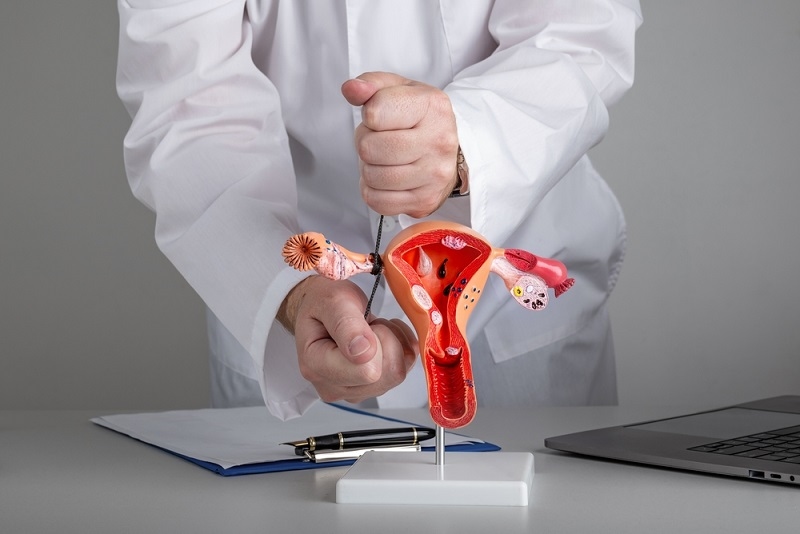Non-Hormonal Birth Control: What You Need to Know

When it comes to contraception, hormonal methods such as birth control pills and patches often take the spotlight. However, many individuals prefer non-hormonal birth control options for various reasons, including health concerns or personal preferences. Non-hormonal birth control methods offer effective alternatives that don't rely on altering hormonal balances in the body. In this blog post, we will explore ten essential things you need to know about non-hormonal birth control, empowering you to make informed decisions about your reproductive health.
What is Non-Hormonal Birth Control?
Non-hormonal birth control refers to contraceptive methods that do not involve the use of synthetic hormones, such as estrogen or progestin. These methods prevent pregnancy by utilizing different mechanisms, such as barrier protection, fertility awareness, or intrauterine devices (IUDs). Non-hormonal options are suitable for individuals who may have contraindications to hormonal methods or prefer a hormone-free approach.
1. Barrier Methods for Protection

Barrier methods, such as condoms, diaphragms, and cervical caps, are popular non-hormonal birth control options. They physically block sperm from reaching the egg, preventing fertilization. Barrier methods offer the added benefit of protecting against sexually transmitted infections (STIs). It's essential to use them correctly and consistently for optimal effectiveness.
2. Copper Intrauterine Devices (IUDs)
Copper IUDs are a highly effective non-hormonal form of birth control. They are small, T-shaped devices inserted into the uterus by a healthcare professional. The copper acts as a spermicide, immobilizing sperm and preventing fertilization. Copper IUDs can provide long-term contraception, with some lasting up to ten years. It's important to note that IUDs do not protect against STIs.
3. Fertility Awareness-Based Methods
Fertility awareness-based methods (FABMs) involve tracking and understanding your menstrual cycle to identify fertile and infertile periods. By monitoring changes in basal body temperature, cervical mucus, and other indicators, you can determine when you're most likely to conceive. FABMs require diligence and consistency, making them suitable for individuals who are comfortable with regular monitoring and have a stable cycle.
4. Withdrawal Method
The withdrawal method, also known as "pulling out," involves the male partner withdrawing the penis before ejaculation to prevent sperm from entering the vagina. While this method is readily accessible, it is less reliable than other forms of contraception, as pre-ejaculate can still contain sperm. The withdrawal method should be used with caution and may be more effective when combined with other forms of non-hormonal birth control.
5. Permanent Sterilization

For individuals or couples seeking a permanent contraceptive solution, sterilization procedures such as tubal ligation (for females) or vasectomy (for males) offer long-term options. These surgical procedures involve blocking or cutting the fallopian tubes or vas deferens, preventing the meeting of sperm and egg. It's crucial to consider these methods as irreversible options and thoroughly discuss the decision with a healthcare professional.
Effectiveness of Non-Hormonal Methods
While non-hormonal birth control methods can be highly effective when used correctly, it's essential to understand their individual effectiveness rates. Barrier methods, such as condoms, have a typical use failure rate of around 13%. Copper IUDs, on the other hand, have a failure rate of less than 1% and are considered one of the most effective forms of birth control. Understanding the effectiveness rates can help you make informed decisions about which method is best suited for your needs.
Non-Hormonal Methods and STI Protection
It's important to note that while some non-hormonal methods, such as condoms, offer protection against STIs, others do not. Barrier methods like diaphragms and cervical caps provide contraception but do not protect against STIs. When choosing a non-hormonal method, consider your risk factors for STIs and discuss with your healthcare provider to ensure comprehensive protection.
Side Effects and Considerations
Non-hormonal birth control methods are generally well-tolerated, with fewer systemic side effects compared to hormonal methods. However, some individuals may experience localized side effects, such as irritation or allergic reactions to barrier methods. Copper IUDs can sometimes lead to increased menstrual bleeding or cramping. It's important to consult with a healthcare professional to discuss potential side effects and any specific considerations related to your health.
Finding the Right Fit for You
Choosing the most suitable non-hormonal birth control method is a personal decision that depends on various factors, including your lifestyle, preferences, and overall health. It's crucial to have open and honest conversations with your healthcare provider to explore the available options and find the best fit for you. They can provide guidance, answer your questions, and help you make an informed decision regarding non-hormonal birth control.
Conclusion
Non-hormonal birth control methods offer individuals diverse options to prevent pregnancy without relying on synthetic hormones. From barrier methods to fertility awareness-based methods and IUDs, there are various effective choices available. By understanding the different methods, their effectiveness rates, and potential considerations, you can make an informed decision that aligns with your unique needs and preferences. Remember, it's essential to consult with a healthcare professional to receive personalized guidance and ensure you choose a non-hormonal birth control method that suits you best, empowering you to take control of your reproductive health.
This content was created by AI
